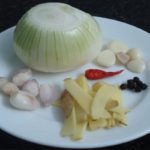1. Washing knives with dish soap
Washing knives with dish soap along with other utensils is really easy to scratch the knives due to contact with other utensils and discolor them due to chemicals in the dish soap. Wash the knives with a soft sponge in hot water, then wipe the knives clean with a clean cloth to avoid mold for the knife handle.
2. Opening a running microwave

Do not open for food while the microwave is still running.
When the microwave is running, the wave energy is very high and can affect human health, so you should not try to open the microwave when it has not turned off automatically.
3. Trying to catch a falling knife
Natural instinct for falling objects is often to try to catch them before they touch the ground. Instead, you should move away from the falling knife as quickly as possible, and you should not inadvertently try to catch the falling knife.
To avoid getting cut by the knife, pick it up only after the object has been securely attached to the floor.
4. Using the same cutting board for raw meat and vegetables

It’s best to have a wooden cutting board for vegetables. And a plastic cutting board for meat to effectively prevent bacteria from escaping as much as possible.
5. Using metal utensils for non-stick pans
A non-stick pan will be very good if it is properly taken care of. Using metal utensils easily scratches the non-stick surface of the pan. You can use utensils made of wood, bamboo, or plastic instead of metal.

When cleaning, if there are stubborn stains, you need to soak the pan in cold water for easy cleaning. Use a soft cloth soaked in dish soap to clean off the grease. Do not use stainless steel scouring pad to scrub non-stick pans as they will cause peeling and damage to the pan. Then rinse with water until clean.
6. Using salt when starting to cook
It’s better to taste the food first. After knowing the taste of the dish, you can add salt if it tastes bland.
According to Justice and Society
More Useful Advice for Homemakers (Part 2)
Have you heard of the surprisingly easy tips to make cooking and household chores simpler? White radish eliminates the acrid taste of salted meat, adding alum to raw shrimp helps soften it, and adding cold water when frying eggs can make them crispy – these are just a few of the tricks to make your life easier.
Ten Strategies to Streamline Your Cooking Process
Are you a busy housewife looking for ways to save time in the kitchen? Did you know that flossing can also help you out? Check out these 10 tips to help you quickly and easily prepare delicious meals for your family. Learn how to peel garlic in 10 seconds and cut cherry tomatoes quickly for a healthy and tasty meal.







































